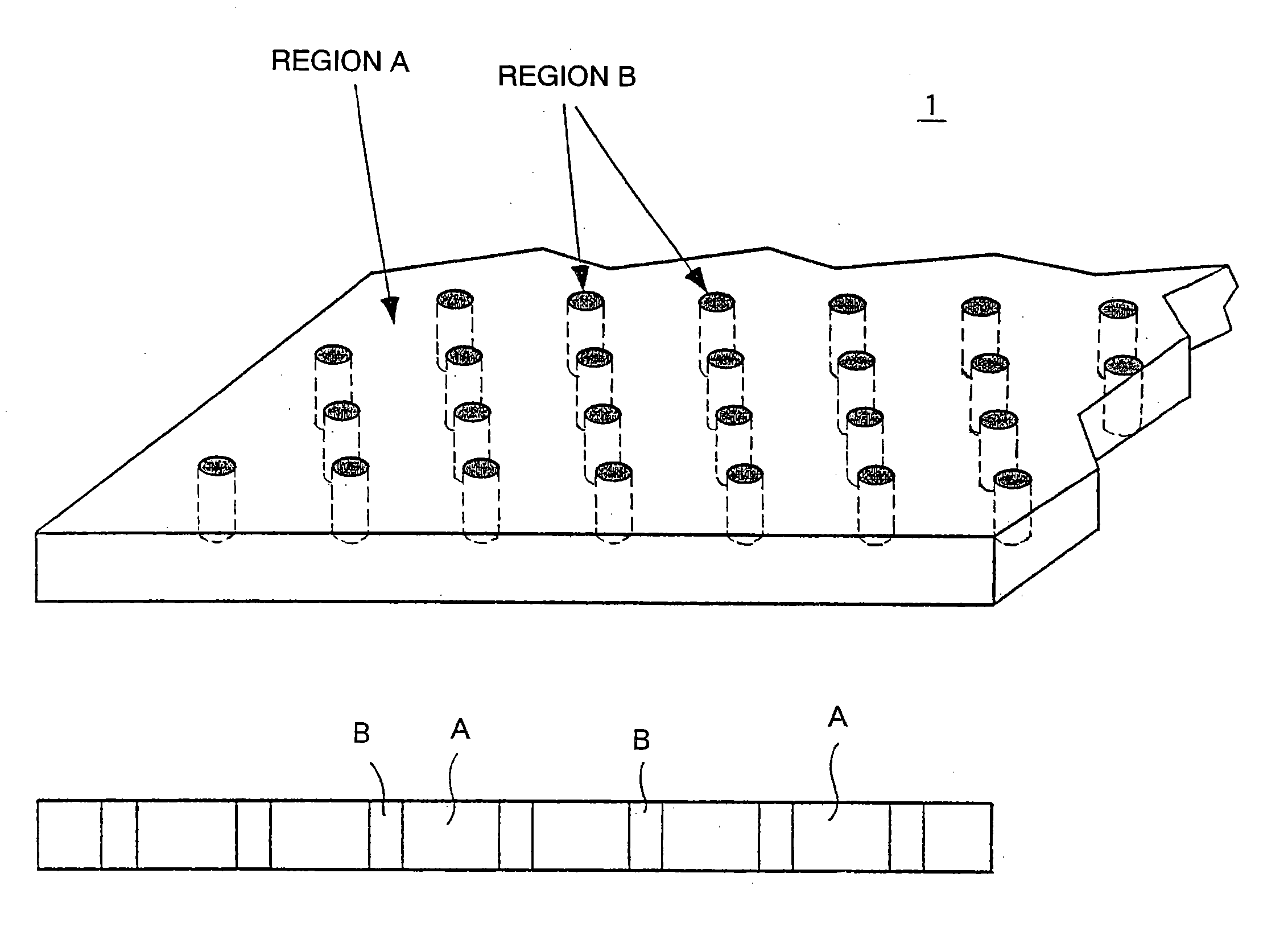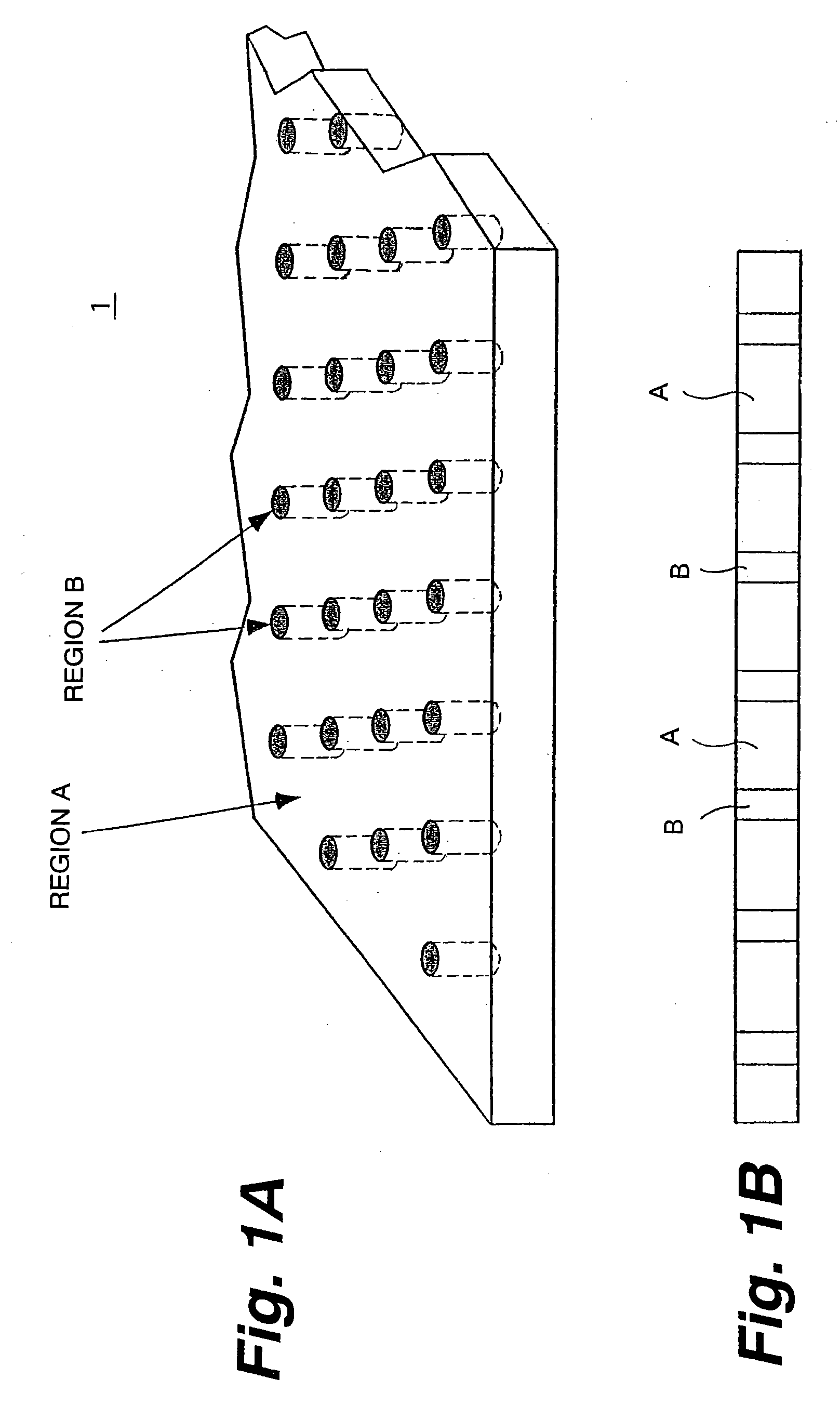Method for producing semiconductor light emitting device, method for producing semiconductor device, method for producing device, method for growing nitride type iii-v group compound semiconductor layer, method for growing semiconductor layer, and method for growing layer
a technology of nitride type iiiv group and semiconductor, which is applied in the direction of crystal growth process, semiconductor laser, polycrystalline material growth, etc., can solve the problems of difficult to produce a large diameter sic substrate, small difference of lattice constants of sic substrates, and inability to know the proper substrate materials of devices using nitride type iii-v group compound semiconductors with high reliability. , to achieve the effect of good light characteristi
- Summary
- Abstract
- Description
- Claims
- Application Information
AI Technical Summary
Benefits of technology
Problems solved by technology
Method used
Image
Examples
tenth embodiment
[0321] Next, a tenth embodiment of the present invention will be described.
[0322] As shown in FIG. 24, according to the tenth embodiment, upper portions of regions B of a GaN substrate 1 are etched out as with the first embodiment. In this case, the etched-out depth is as large as for example several ten μm. Thereafter, as shown in FIG. 25, an insulation film 18 such as a SiO2 film is fully formed on the surface of the GaN substrate 1. At that point, since the etched-out portions of the regions B are deep, they are not fully filled with the insulation film 18. As a result, the GaN substrate 1 has holes. Thereafter, the insulation film 18 is etched back by for example the RIE method so as to remove the insulation film 18 from the region A. Thereafter, a GaN type semiconductor layer L is grown on the GaN substrate 1 as with the fifth or sixth embodiment.
[0323] Except for the foregoing portion, the tenth embodiment is the same as the first embodiment. Thus, the description of the oth...
eleventh embodiment
[0325] Next, an eleventh embodiment of the present invention will be described.
[0326] As shown in FIG. 27, according to the eleventh embodiment, regions B are periodically arranged in a hexagonal lattice shape in an area A of a GaN substrate 1 as with the first embodiment. However, regions C are formed as transitional regions between the region A and the regions B unlike with the first embodiment. The average dislocation density of the regions C is in the middle of the average dislocation density of the region A and the average dislocation density of the regions B. In reality, the average dislocation density of the region A is 2×106 cm−2 or lower. The average dislocation density of the regions B is 1×108 cm−2 or greater. The average dislocation density of the regions C is smaller than 1×108 cm−2 and greater than 2×106 cm−2, for example around (1 to 2)×107 cm−2. The arrangement period of the regions B (the distance between the centers of the most adjacent regions B) is for example 3...
twelfth embodiment
[0330] Next, a twelfth embodiment of the present invention will be described.
[0331] Unlike with the second embodiment of which all the regions B of the GaN substrate 1 are etched out, according to the twelfth embodiment, all regions B and regions C of a GaN substrate 1 are etched out.
[0332] Except for the foregoing portion, the twelfth embodiment is the same as the first embodiment. Thus, the description of the other portions of the twelfth embodiment is omitted.
[0333] According to the twelfth embodiment, the same advantage as the first embodiment can be obtained.
PUM
| Property | Measurement | Unit |
|---|---|---|
| diameter | aaaaa | aaaaa |
| diameter | aaaaa | aaaaa |
| diameter | aaaaa | aaaaa |
Abstract
Description
Claims
Application Information
 Login to View More
Login to View More - R&D
- Intellectual Property
- Life Sciences
- Materials
- Tech Scout
- Unparalleled Data Quality
- Higher Quality Content
- 60% Fewer Hallucinations
Browse by: Latest US Patents, China's latest patents, Technical Efficacy Thesaurus, Application Domain, Technology Topic, Popular Technical Reports.
© 2025 PatSnap. All rights reserved.Legal|Privacy policy|Modern Slavery Act Transparency Statement|Sitemap|About US| Contact US: help@patsnap.com



